Characteristics of a good woodshed
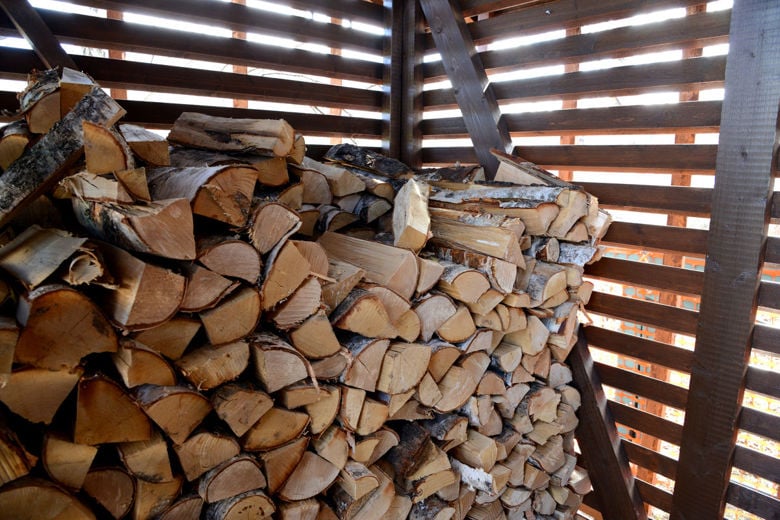
In a good woodshed, the wood stays dry and air circulates through gaps in the floor, walls and ceiling. A good woodshed is well ventilated, provides protection from rain and enables dry and drying wood to be separated from each other. A lock-up door reduces the risk of vandalism.
We asked residents to send photos of functional woodsheds to a contest arranged as part of the Urban Woodshed project in the autumn of 2015. All the woodsheds pictured include good characteristics, but they also have room for improvement.
Get tips and ideas for your own woodshed here!
-
1
A functional woodshed is ventilated
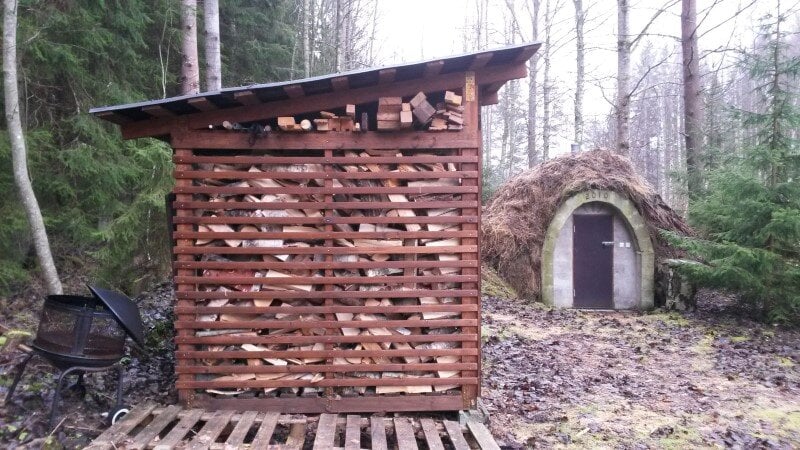
Ventilation is one of the most important characteristics of a woodshed. Air should circulate well through the walls, base and roof for the wood to dry. If the woodshed is too airtight, moisture condenses and the wood becomes mouldy.
-
2
The woodshed is fireproof
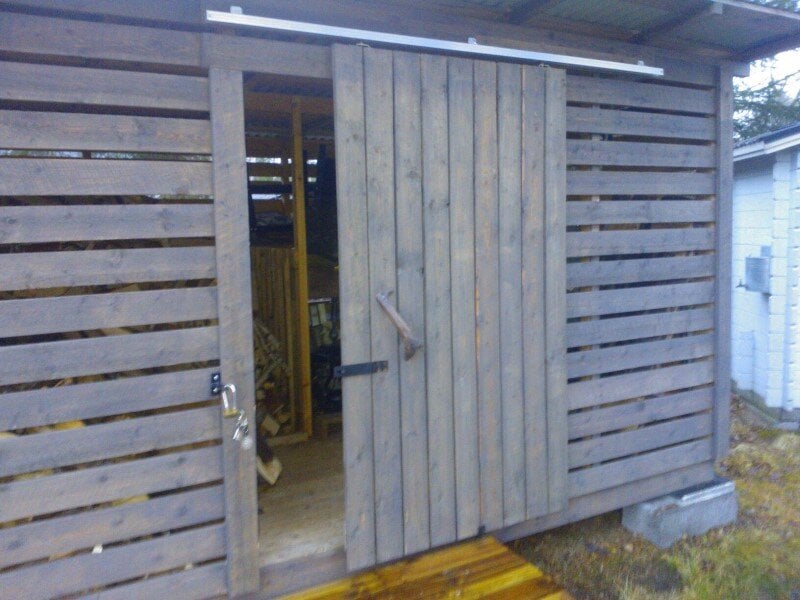
A fireproof woodshed is located sufficiently far away from residential buildings. A lock-up door protects the wood from vandalism. Due to the risk of fire, storing wood under the eaves of a building or in the garage is not allowed. Read more about fire safety.
-
3
The wood is protected from rain
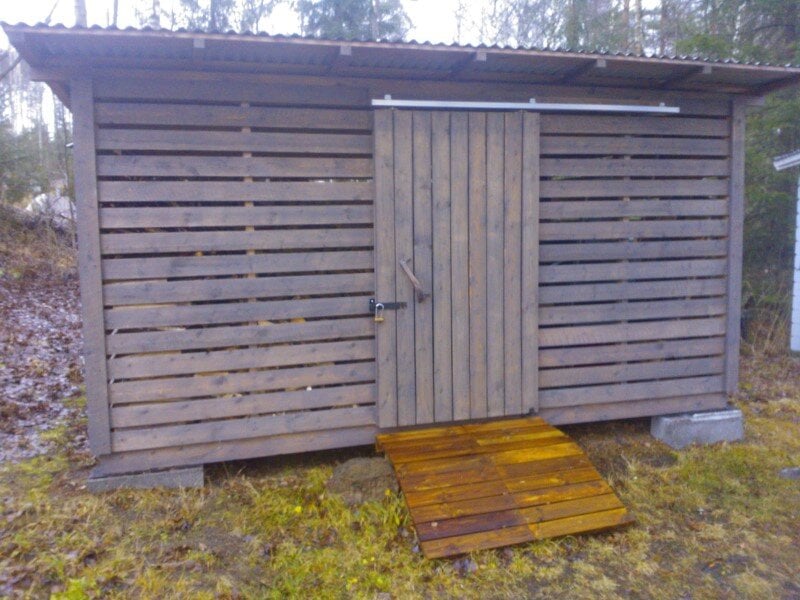
Only dry wood burns efficiently and cleanly. In a functional woodshed, the wood stays dry and the shed also provides protection against horizontal rain. Long eaves and sparse wall boarding provide sufficient protection. Diagonal or overlapping boards enable a fairly dense wall structure without reducing ventilation. This also provides visual protection and is particularly effective against rain. This shed also has an airy foundation, so the wood will not get wet from the moisture from the ground.
-
4
A slim woodshed fits even on a small plot
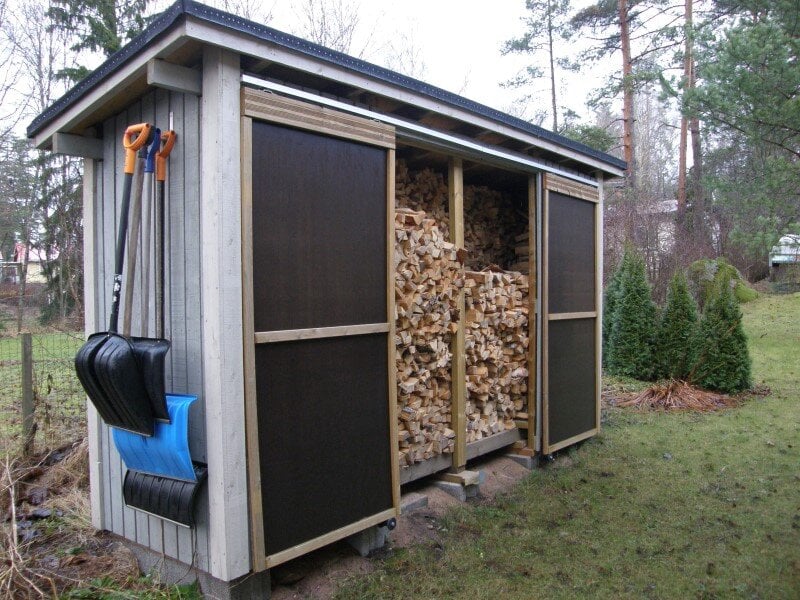
Detached house plots in cities are often small, so there is little space for a woodshed. A longitudinal shape allows for space-efficient placement of the shed at the edge of the plot. The woodshed can also be placed as part of the plot boundary with the neighbour’s consent, as long as the distances are sufficient in terms of fire safety or the shed is fire compartmented. Could you consider sharing a woodshed with your neighbour? The woodshed should be able to accommodate enough wood for at least one year’s needs.
-
5
You can also build a woodshed out of recycled materials
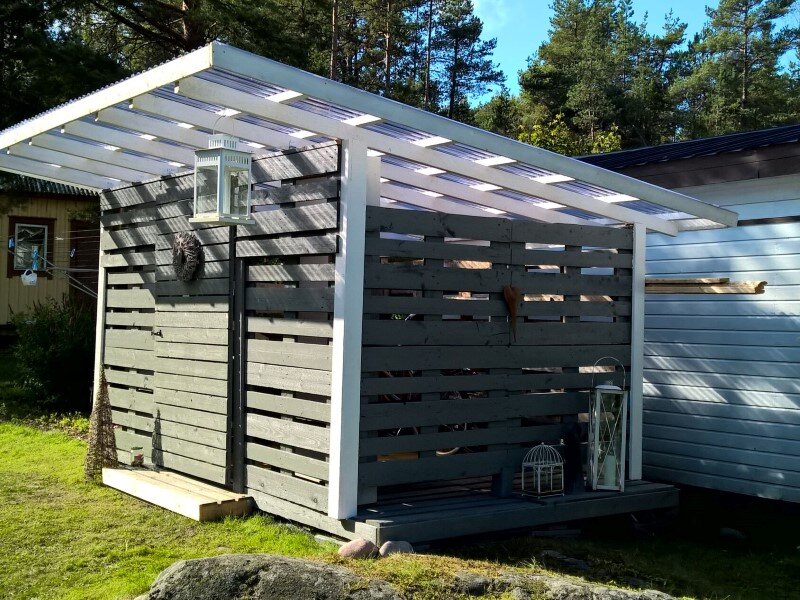
A resourceful recycler can build a woodshed at a low cost. For example, the following recycled materials can be used in woodsheds: euro pallets, waste boards, metre-long pieces of board and building demolition waste.
-
6
Other things can also be stored in the woodshed
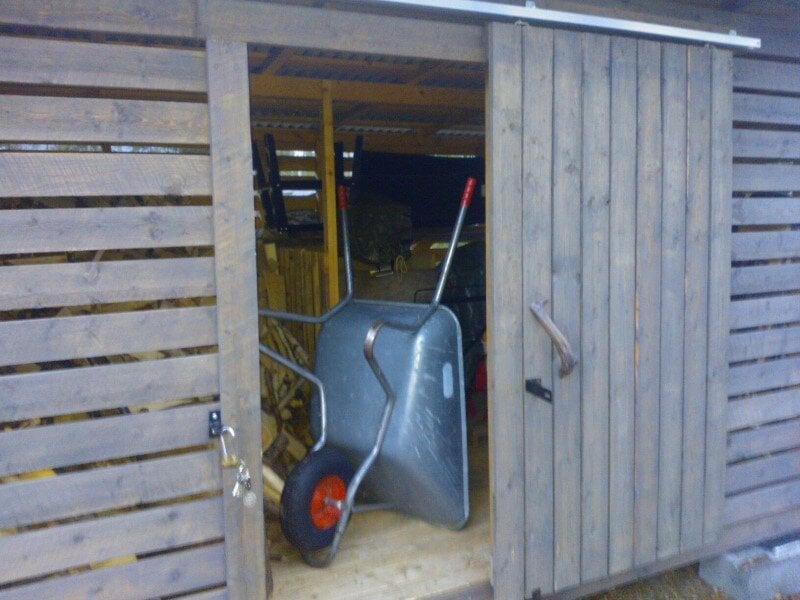
You can use the woodshed for many purposes, in which case there is no need for several separate buildings. The woodshed building can also serve as a storage room for tools, for example.
-
7
The woodshed adapts according to needs and location
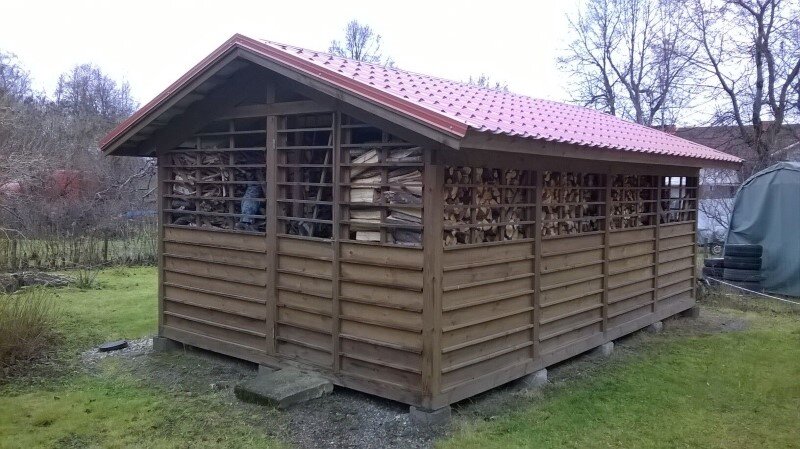
A woodshed made of blocks works in different locations: it can be implemented in various sizes or colours. The woodshed will also stand the test of time when you can adjust its size according to your needs.
-
8
A functional woodshed is easy to use
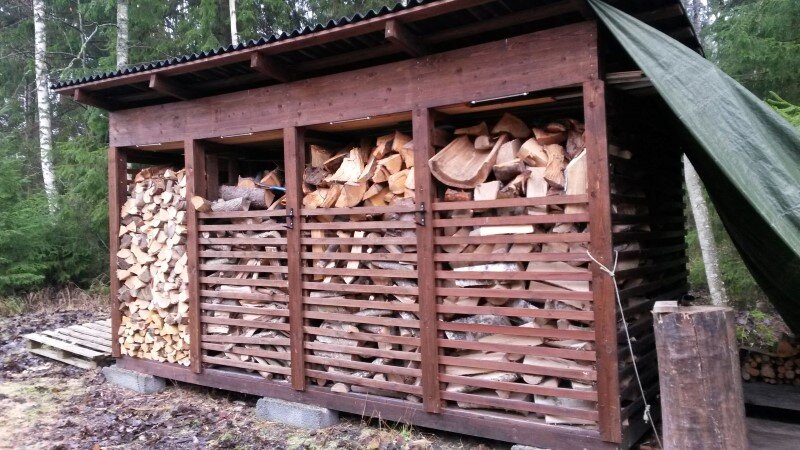
Does this sound familiar: the driest and oldest pieces of firewood are difficult to access on the back wall of the woodshed, as newer stock has been piled in front of them? Wood that is drying should be kept separate from the dry wood. This ensures that you will not burn damp wood.
-
9
An urban woodshed fits the yard and the city
What kind of woodshed fits into an urban environment? The answer: a woodshed in the same style as the other buildings on the plot. Even a traditional woodshed can be customised to match its surroundings through surface material and colour.
Also keep in mind:
- Due to the risk of fire, drying or storing wood under the eaves of a building is not allowed under any circumstances (Rescue Act, Section 9).
- Because of possible fungal spores, do not store wood in living spaces. Doing so is also restricted by fire regulations.
- The municipality’s building code contains conditions for the size and location of a storage building.
- A woodshed of a suitable size can accommodate enough wood for the needs of one year.